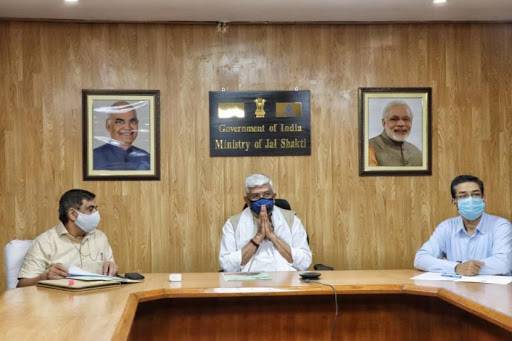
Ministry of Jal Shakti had launched a 100-day campaign on October 2, 2020, based on the vision of Prime Minister Narendra Modi to ensure potable water supply in all schools and Anganwadi centres across the nation.
Jammu & Kashmir plans to fulfil Prime Minister’s vision by providing safe water in all these institutions within the campaign period so that the children will have access to potable piped water for drinking, hand washing and to be used in toilets when the schools reopen.
To assess the progress of implementation of Jal Jeevan Mission (JJM) in States and UTs, a mid-year review of all States and UTs is being undertaken by the National Jal Jeevan Mission team by Ministry of Jal Shakti through video conferencing.
States and UTs are presenting the status of the provision of the tap water connection to rural households as well as the institutional mechanisms in place and the way forward to ensure universal coverage. Jammu & Kashmir presented their progress on implementation of JJM in the Union Territory on October 24.
The Union Territory of J&K has 18.17 lakh households, out of which 8.38 lakhs (46 per cent) are already provided with tap water connections. The UT is allocated Rs 681.77 Crore as Central share under JJM for this financial year.
The UT is eligible for extra allocation supported physical and financial performance. UT is planning 100 per cent coverage by December 2022 ahead of national goal by 2023-24. By doing so, J&K will be leading to accomplish the ambitious target of providing a tap connection to every rural home.
Jammu & Kashmir has finalized the Village Action Plan (VAP) in respect of 4,038 villages. It comprises of components such as source strengthening, water supply, greywater management and operation & maintenance. Convergence planning is to be done at the lowest level i.e. village or Gram Panchayat, for source strengthening, water harvesting, aquifer recharge, water treatment and grey-water management, etc. For which dovetailing of resources from MGNREGS, 15th Finance Commission Grants for PRIs, SBM (G), CSR funds, Local Area Development funds, etc might be used for judicious use of funds.
Stress was given on the constitution of Village Water & Sanitation Committees so that the local village community/ Gram Panchayats and or its sub-committee/ user groups to be involved in planning, implementation, management, operation and maintenance of water supply systems in villages to ensure the long-term sustainability of water supply systems to achieve drinking water security in rural areas.
















